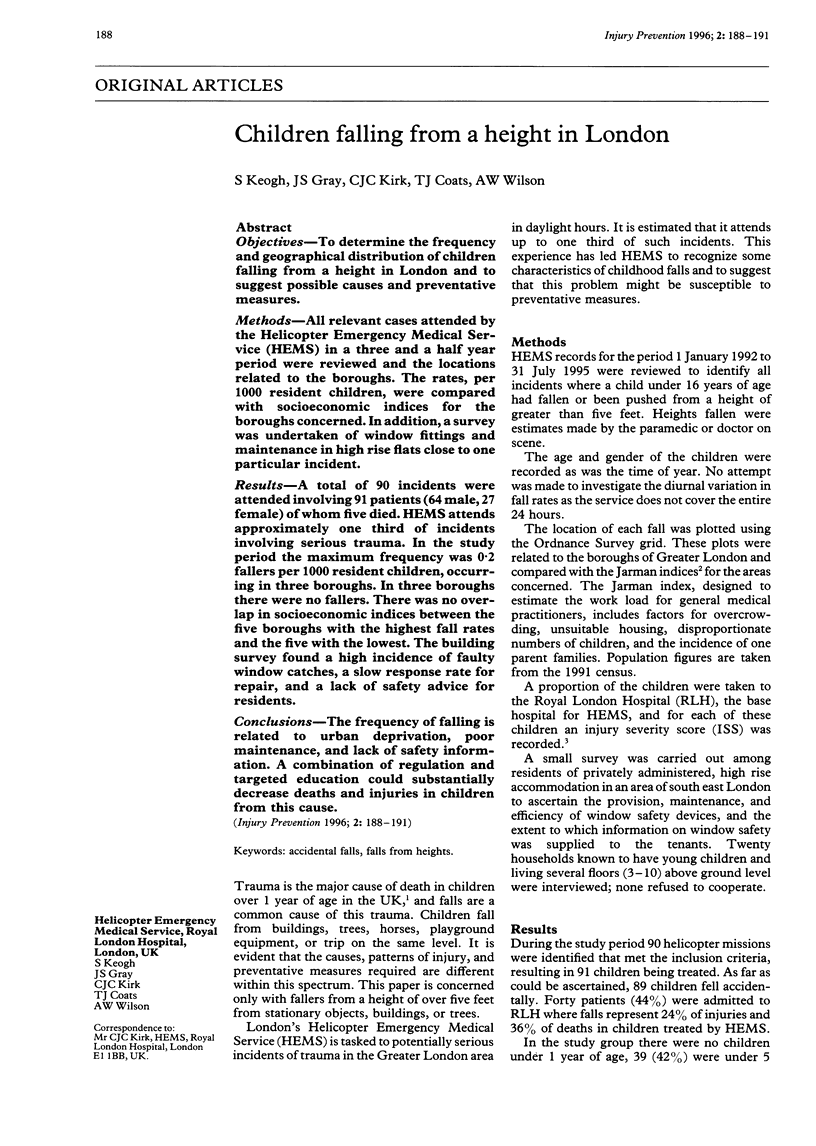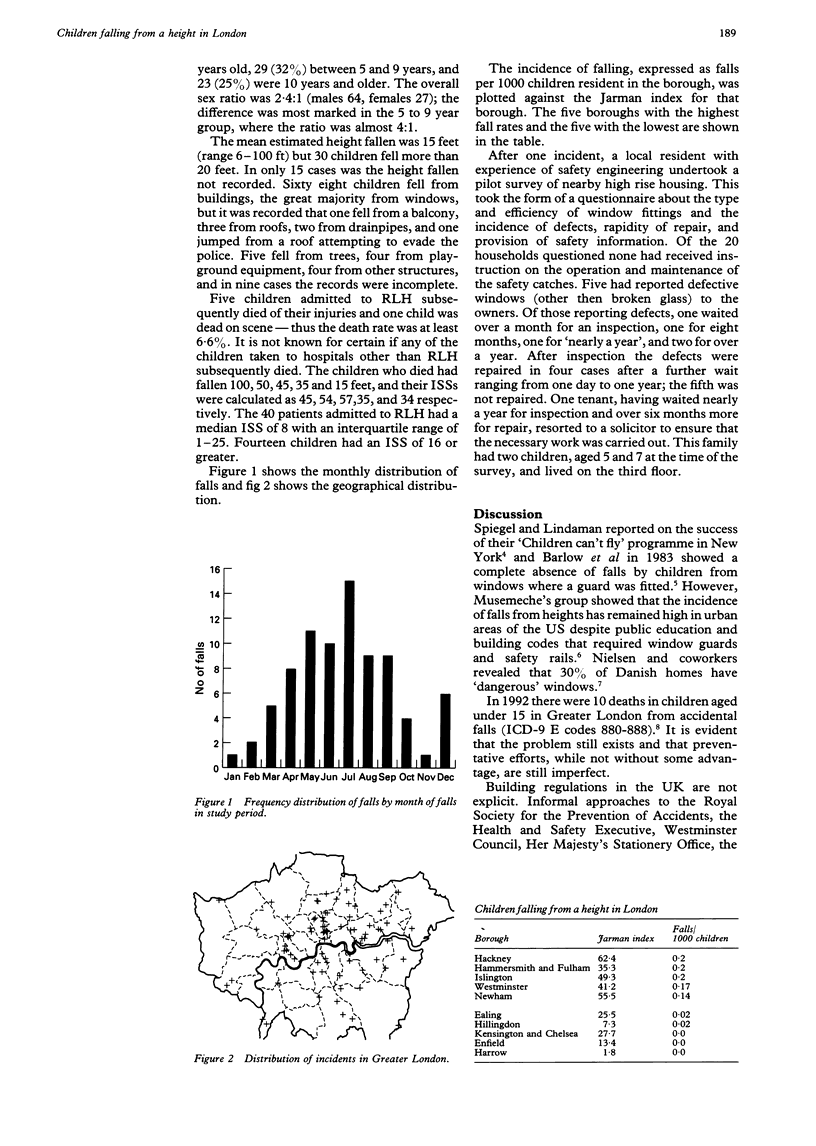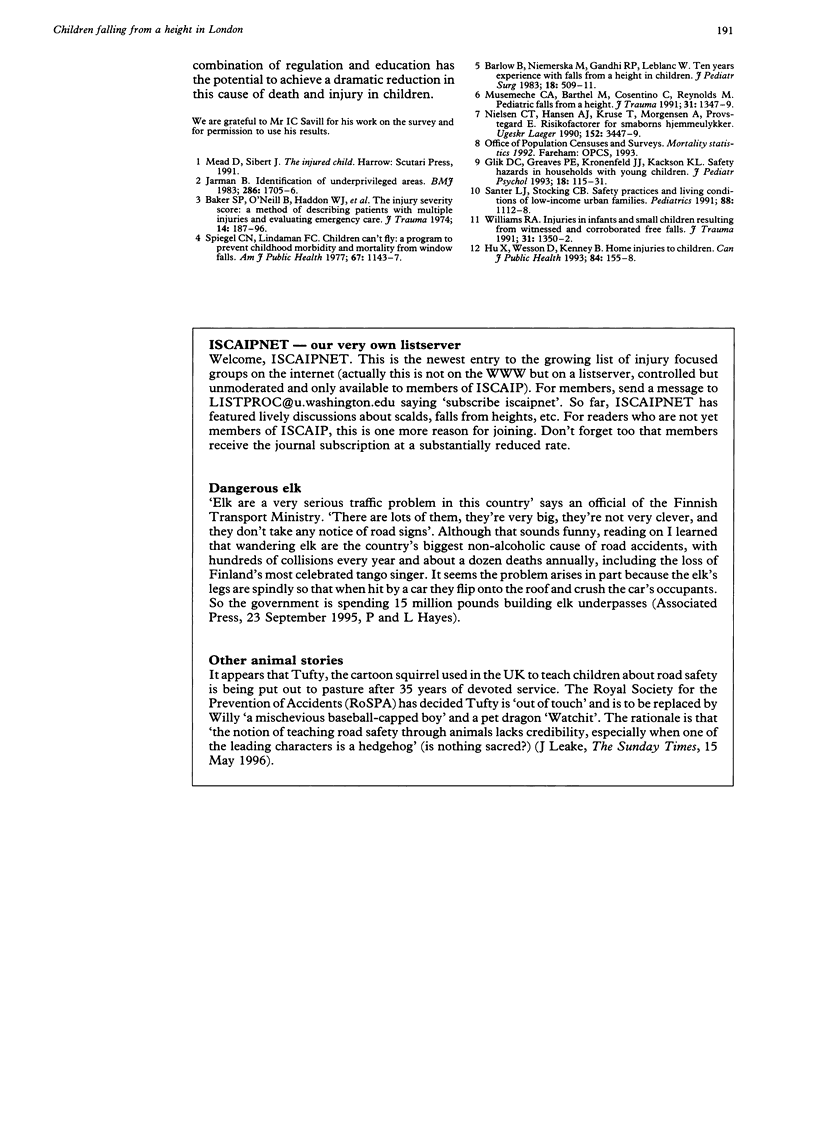Abstract
OBJECTIVES: To determine the frequency and geographical distribution of children falling from a height in London and to suggest possible causes and preventative measures. METHODS: All relevant cases attended by the Helicopter Emergency Medical Service (HEMS) in a three and a half year period were reviewed and the locations related to the boroughs. The rates, per 1,000 resident children, were compared with socioeconomic indices for the boroughs concerned. In addition, a survey was undertaken of window fittings and maintenance in high rise flats close to one particular incident. RESULTS: A total of 90 incidents were attended involving 91 patients (64 male, 27 female) of whom five died. HEMS attends approximately one third of incidents involving serious trauma. In the study period the maximum frequency was 0.2 fallers per 1,000 resident children, occurring in three boroughs. In three boroughs there were no fallers. There was no overlap in socioeconomic indices between the five boroughs with the highest fall rates and the five with the lowest. The building survey found a high incidence of faulty window catches, a slow response rate for repair, and a lack of safety advice for residents. CONCLUSIONS: The frequency of falling is related to urban deprivation, poor maintenance, and lack of safety information. A combination of regulation and targeted education could substantially decrease deaths and injuries in children from this cause.
Full text
PDF



Selected References
These references are in PubMed. This may not be the complete list of references from this article.
- Baker S. P., O'Neill B., Haddon W., Jr, Long W. B. The injury severity score: a method for describing patients with multiple injuries and evaluating emergency care. J Trauma. 1974 Mar;14(3):187–196. [PubMed] [Google Scholar]
- Barlow B., Niemirska M., Gandhi R. P., Leblanc W. Ten years of experience with falls from a height in children. J Pediatr Surg. 1983 Aug;18(4):509–511. doi: 10.1016/s0022-3468(83)80210-3. [DOI] [PubMed] [Google Scholar]
- Glik D. C., Greaves P. E., Kronenfeld J. J., Jackson K. L. Safety hazards in households with young children. J Pediatr Psychol. 1993 Feb;18(1):115–131. doi: 10.1093/jpepsy/18.1.115. [DOI] [PubMed] [Google Scholar]
- Hu X., Wesson D., Kenney B. Home injuries to children. Can J Public Health. 1993 May-Jun;84(3):155–158. [PubMed] [Google Scholar]
- Jarman B. Identification of underprivileged areas. Br Med J (Clin Res Ed) 1983 May 28;286(6379):1705–1709. doi: 10.1136/bmj.286.6379.1705. [DOI] [PMC free article] [PubMed] [Google Scholar]
- Musemeche C. A., Barthel M., Cosentino C., Reynolds M. Pediatric falls from heights. J Trauma. 1991 Oct;31(10):1347–1349. doi: 10.1097/00005373-199110000-00004. [DOI] [PubMed] [Google Scholar]
- Nielsen C. T., Hansen A. J., Kruse T., Mogensen A., Provstegård E. Risikofaktorer for småbørns hjemmeulykker. Ugeskr Laeger. 1990 Nov 12;152(46):3447–3449. [PubMed] [Google Scholar]
- Santer L. J., Stocking C. B. Safety practices and living conditions of low-income urban families. Pediatrics. 1991 Dec;88(6):1112–1118. [PubMed] [Google Scholar]
- Spiegel C. N., Lindaman F. C. Children can't fly: a program to prevent childhood morbidity and mortality from window falls. Am J Public Health. 1977 Dec;67(12):1143–1147. doi: 10.2105/ajph.67.12.1143. [DOI] [PMC free article] [PubMed] [Google Scholar]
- Williams R. A. Injuries in infants and small children resulting from witnessed and corroborated free falls. J Trauma. 1991 Oct;31(10):1350–1352. doi: 10.1097/00005373-199110000-00005. [DOI] [PubMed] [Google Scholar]


